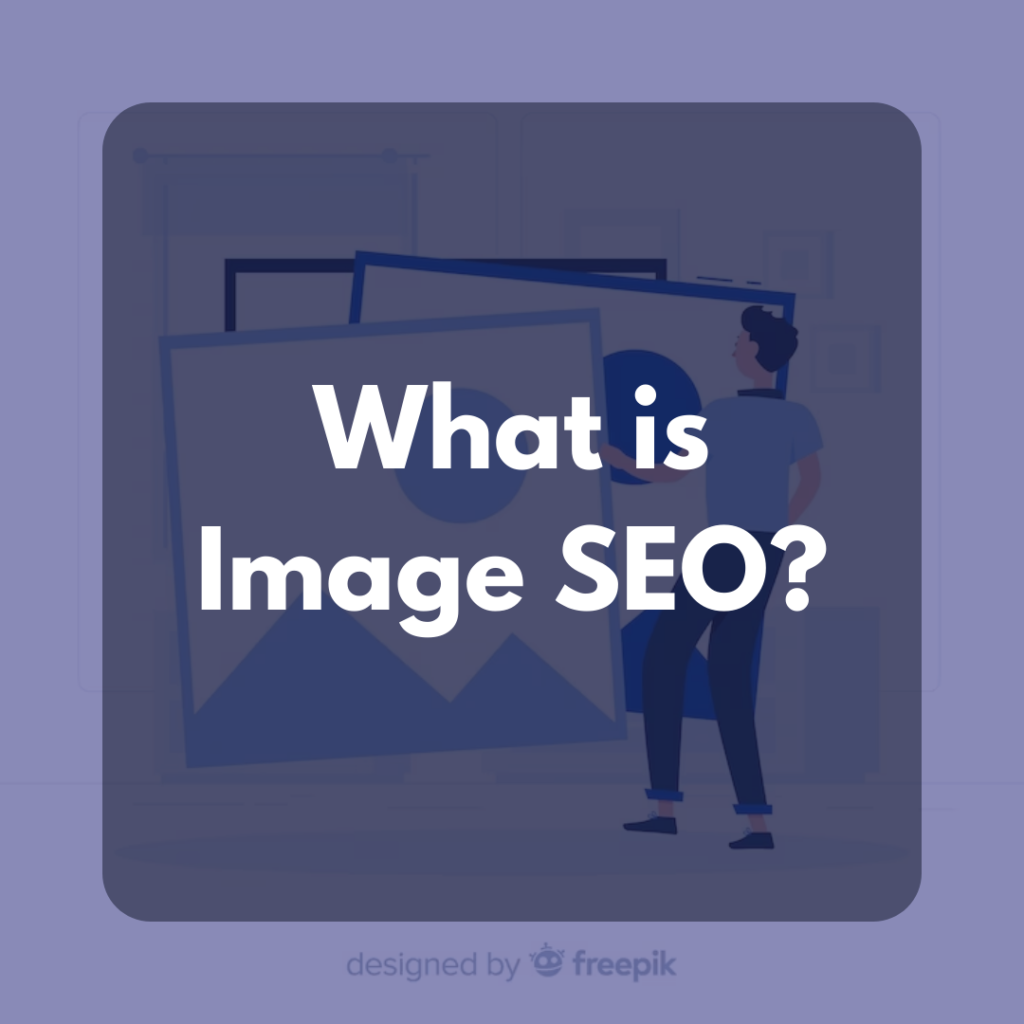Image SEO: 10 Tips for Image Optimization in 2024
Introduction
Image SEO stands as the silent architect behind a website’s digital success, a realm where every pixel holds the potential to elevate your online presence. In the ever-evolving landscape of search engine optimization, images have become more than just visual elements; they are now integral players in the intricate dance of algorithms and user experience.
As users navigate the vast expanse of the internet, search engines meticulously scrutinize and rank websites based on a myriad of factors, and within this intricate web, Image SEO emerges as a potent catalyst for enhanced visibility. Beyond the surface aesthetics, mastering Image SEO involves a strategic fusion of file optimization, alt text finesse, and responsive design, ensuring that your visual content not only captivates audiences but also garners favor from search engine algorithms.
In this blog, discover ten practical Image SEO tips to boost your website, explore the benefits it brings, and find five indispensable tools for a visually optimized online presence. Let’s uncover the secrets to improving your website’s visibility and engagement.
Table of Contents
What is Image SEO?
Image SEO, or Image Search Engine Optimization, is a specialized facet of digital marketing that focuses on enhancing the visibility and relevance of images within search engine results. It involves optimizing various elements associated with images on a website to improve their discoverability by search engines like Google. Key aspects of Image SEO include crafting descriptive file names, utilizing meaningful alt text, compressing images for faster loading times, and ensuring responsive design for various devices.
By implementing Image SEO strategies, website owners aim to not only enhance user experience through visually appealing content but also to communicate effectively with search engine algorithms. Successful Image SEO not only contributes to higher rankings in image searches but can also positively impact overall website visibility, attracting more organic traffic and improving the site’s performance in search engine results pages.

Importance of Image SEO
In the online world, pictures do much more than just look pretty – they play a crucial role in how websites get noticed. That’s where Image SEO steps in, like a behind-the-scenes hero making sure your images are not just eye-catching but also friendly to search engines. Imagine it as a secret code that search engines understand, helping your website climb up the search results ladder.
Why does this matter? Well, when your images are optimized with smart names, easy-to-understand descriptions, and other tricks, your website becomes more likable to search engines. It’s not just about looking good; it’s about making sure your website stands out and gets the attention it deserves in the crowded online space. So, let’s dive into the world of Image SEO – where small changes can make a big difference!
Enhanced User Experience
Image SEO goes beyond aesthetics, ensuring swift loading times for a seamless user experience. By optimizing image file sizes and formats, websites become more responsive, captivating visitors and reducing frustration associated with slow-loading content.
Improved Accessibility
Image SEO prioritizes inclusivity by incorporating descriptive alt text, making visual content accessible to individuals with disabilities who rely on screen readers. This not only aligns with ethical web practices but also adheres to accessibility standards, enhancing the overall reach and impact of your content.
Higher Engagement
Visually compelling content fosters increased user engagement, a metric highly valued by search engines. Optimized images, combined with captivating visuals, encourage users to linger on your site, reducing bounce rates and signaling content relevance.
Ranking Boost
Search engines prioritize websites with optimized images, considering factors such as file names, alt text, and compression. By aligning with these criteria, your website stands to gain higher rankings in search results, leading to increased visibility.
Global Reach
Image SEO extends its influence globally through Content Delivery Network (CDN) hosting. This technology ensures rapid image delivery across the globe, catering to an international audience and contributing to improved search performance on a global scale.
Mobile Friendliness
The prevalence of mobile search emphasizes the importance of Image SEO in creating a mobile-friendly user experience. Responsive design and optimized images are vital components in ensuring that your website performs seamlessly across various devices, aligning with evolving user trends.
Social Media Traction
Well-optimized images are more shareable on social media platforms. As users share your visually appealing content, it not only amplifies your brand’s reach on social media but also indirectly influences search engine rankings through increased visibility and recognition.
Competitive Edge
Websites with superior Image SEO often gain a competitive advantage. By standing out among competitors in terms of visual appeal, loading speed, and overall user experience, your website attracts more organic traffic and establishes authority in your niche.
Algorithmic Understanding
Image SEO elements like structured data markup provide search engines with additional context about your images. This enhanced understanding improves algorithmic relevance, ensuring that your images are accurately interpreted and prioritized in search results.
10 Image SEO Tips
Images are the heart of a website, and making them SEO-friendly is like giving your site a boost. Image SEO tips are like secret codes for search engines, helping your pictures get noticed. Stick around to discover 10 Image SEO tips that can make your website shine brighter on the internet stage!
1 . Optimize File Names
Choosing the right file name is the first step in Image SEO. Instead of generic names like “IMG123.jpg,” opt for descriptive, keyword-rich names. For instance, if your image is about a beach sunset, name it “beach-sunset.jpg.” Search engines rely on file names to understand the content of the image, so make them relevant.
2. Utilize Alt Text
Alt text, or alternative text, is essential for accessibility and SEO. It provides a textual description of the image, aiding users who can’t view it and helping search engines understand its context. Craft concise and descriptive alt text incorporating relevant keywords. This not only improves user experience but also boosts your image’s visibility in search results.
3. Compress Images
Large image files can slow down your website, affecting both user experience and search rankings. Compress your images without sacrificing quality using tools like TinyPNG or JPEG-Optimizer. Smaller file sizes lead to faster loading times, which is a crucial factor for both user satisfaction and search engine rankings.
4. Choose Appropriate Image Formats
Selecting the right file format is crucial for Image SEO. JPEG is ideal for photographs due to its compression capabilities, while PNG is suitable for images with transparency. For logos and graphics, consider using SVG (Scalable Vector Graphics), which maintains quality regardless of size.
5. Implement Responsive Design
Google prioritizes mobile-friendly websites. Ensure your images and overall website design are responsive to various devices and screen sizes. Responsive design not only enhances user experience but aligns with search engine preferences, positively impacting your SEO efforts.
6. Add Captions
Captions provide additional context to your images and can be valuable for SEO. When applicable, include informative and engaging captions. This not only enhances user engagement but also provides search engines with more information about the image, contributing to improved SEO.
7. Enable Image Lazy Loading
Lazy loading is a technique that delays the loading of images until the user scrolls down to view them. This improves page load times, enhancing user experience and search engine rankings. Many content management systems (CMS) and plugins offer easy ways to enable lazy loading on your website.
8. Host Images on a CDN
Using a Content Delivery Network (CDN) distributes your images across multiple servers globally. This reduces latency and ensures faster loading times for users worldwide. Faster-loading websites tend to rank higher in search results, making CDN integration a valuable asset for Image SEO.
9. Create Image Sitemaps
Including images in your XML sitemap helps search engines index and understand the structure of your visual content. This facilitates better crawling and ensures that search engines recognize and prioritize your images in relevant searches.
10. Utilize Structured Data Markup
Implementing schema markup specifically for images provides search engines with additional information about your visual content. This includes details such as the image subject, license, and author. Structured data markup enhances the understanding of your images, potentially leading to improved visibility in search results.
By implementing these ten Image SEO tips, you’ll not only enhance the visual appeal of your website but also optimize it for better search engine rankings. Remember that a holistic approach to SEO, combining both textual and visual elements, is key to a successful online presence.




